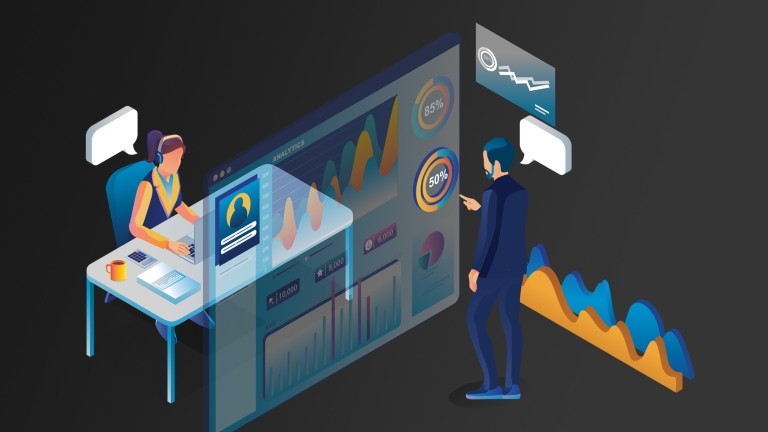
What is a network router?
At the very heart of its role, a network router is a device that enables communication between different networks. Routers ensure that your data reaches the right place. They’re essentially sophisticated traffic cops, standing at the intersections of data highways, ensuring that the packets of data are sent off in the right direction, securely, be it across a busy office network or the wider expanse of the internet.
What do network routers do?
In any modern business, when we engage with digital systems - sending an email, updating a cloud-based document, even using an internal messaging system - the data we're working with is sent and received in small chunks known as 'packets.' Each one of these packets has a specific destination and must be routed to this endpoint as quickly and efficiently as possible. In the sprawling landscape of digital connectivity, network routers guide these packets to their correct locations.
Routers are highly intelligent devices. They don't just blindly send data packets on their way, hoping they'll reach their destination. Instead, routers analyze the current network conditions and then calculate the most effective route for each packet. This is similar to a GPS system that not only knows your destination but can also analyze current traffic conditions to avoid gridlock and find the fastest route. Routers use complex algorithms to ensure your data gets where it needs to go in the quickest and most efficient way possible.
What kinds of routers are there?
The world of routers is diverse and versatile, with different types designed to cater to specific needs. In smaller businesses and home offices, you'll often find broadband routers, which usually incorporate a modem and a switch, making them a convenient all-in-one solution for simple networks. But when it comes to larger organizations, where the network needs are more complex, specialized types of routers come into play, such as edge routers and core routers.
Edge routers serve a crucial role in enterprise networks, connecting a company's internal network with the networks of Internet Service Providers (ISPs). They form the boundary - or the 'edge' - of an organization's network, controlling data flow between the business and the wider internet. Core routers, on the other hand, work within the ISPs themselves, dealing with massive volumes of data traffic within the central arteries of the internet.
We can't overlook wireless routers either, which allow devices to connect to the network without the need for physical wires. As we've seen the rise of flexible and remote working, these types of routers have become a staple in many businesses. They allow devices like laptops, tablets, and smartphones to stay connected, even when moving around within the range of the network.
How does data routing work?
Data routing - a fundamental function of edge routers - involves the movement of data across networks from one device to another. This process happens every time we use the internet, from sending an email to streaming a movie. Here's a simple breakdown of the steps routers go through:
- Packetization: When you want to send information over the internet (like sending an email or accessing a web page), that information is broken down into smaller, manageable chunks called packets. Each packet contains not only a piece of the overall data but also the destination address - a unique set of numbers - for where it needs to go.
- Routing Decision: Each packet is then sent to a router, which reads the destination address. The router makes a decision on where to send the packet next, based on the information it has about the network.
- Hops: In most cases, packets won't be sent directly from the original device to the destination device. Instead, they'll 'hop' through multiple routers along the way. At each hop, the router looks at the packet's destination address and forwards it along the most efficient route.
- Destination Reached: Finally, the packet reaches its destination. But that’s not quite everything - remember, it's just a small piece of the original data. The receiving device has to gather all the packets and reassemble them into the original data.
- Acknowledgement: Once the receiving device has all the packets and has reassembled the data, it sends an acknowledgement back to the original device. This lets the original device know that the data has been received correctly.
- Error Checking and Retransmission: If there's a problem with any of the packets (for example, if they didn't arrive or arrived with errors), the receiving device can ask the original device to resend them. This ensures the integrity of the data.
It's important to note that each router in this process doesn't know the whole path of a packet. It only knows about the networks that are directly connected to it and where to forward the packet based on the best route it knows at that time. The routing tables, which are like the router's map, are updated dynamically based on network conditions, which is why the internet is considered a 'packet-switched' network.
Routers use various protocols to learn about the best paths, including RIP (Routing Information Protocol), OSPF (Open Shortest Path First), BGP (Border Gateway Protocol), and others. These routing protocols allow routers to communicate changes in network paths and ensure data gets routed as efficiently as possible.
In addition, some enterprise-grade routers now offer advanced features. These can include Software-Defined WAN (SD-WAN) solutions, which increase the performance and control of application traffic over redundant WAN interfaces and VPN links, by making forwarding decisions based on link quality. Another advanced feature is Virtual Routing and Forwarding (VRF), which allows one router to be divided into multiple separate virtual domains, improving security.
In conclusion
Network routers, while not always visible, are powerhouses that maintain and facilitate our corporate connectivity. Directing traffic and ensuring the smooth operation of our daily tasks, they work behind the scenes to keep businesses running seamlessly. They also act as a key layer of security, which you can read about here.
Related

